-
About
- About Listly
- Community & Support
- Howto
- Chrome Extension
- Bookmarklet
- WordPress Plugin
- Listly Premium
- Privacy
- Terms
- DMCA Copyright
- © 2010-2025 Boomy Labs
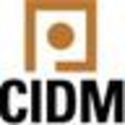 center4infodev
center4infodev
Listly by center4infodev
Suggest a longer presentation. Since collaboration is our focus, consider a presentation on a successful (or not) collaboration effort. You may be working with customers to identify content needs or asking customers to contribute content. You may be developing a strategy that links documentation and training or documentation and service or includes content marketing. You may want to talk about another theme identified in the CIDM member survey. You might even suggest a panel or a workshop. Your choice.
Traditionally, information developers have been engaged in a project after the product development process is over.
In a Design Thinking, Agile-led company, writers are involved for the whole development cycle. This is new for us, and we realized that our development team didn’t actually know what we do, how we do it, or how to interact with us.
This talk will cover the steps we took to build collaboration across different teams, the lessons we learned, and where we want to go. The talk is designed to inspire managers with new ideas to drive collaboration across diverse teams, and will show the rewards of this new way of working through case studies and discussion.
This talk looks at how a content publishing team reinvented their roles and methods for ensuring customers get great product documentation in an environment where staffing levels are so low that writers can no longer write. You'll hear this team's experience in moving away from traditional content publishing practices and instead, collaborating with other subject matter experts. The talk covers aspects of change management, collaboration, partnering, creative problem solving, and teamwork.
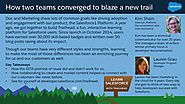
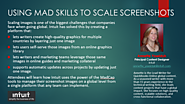
Intuit has solved the issue of scaling graphics and guides for many countries by creating a platform that includes high-quality, layered images, a self-serve library, and automated updates. This talk discusses the challenges that Intuit faced when trying to produce images and guides for multiple countries, what they did to solve those issues, how they got company buy-in, and a demo of the new process. Attendees will gain some insights into some of the challenges companies face around producing localized images and how they can implement similar solutions in their own projects. #Intuit #scaling #single-sourcing #graphics #global #localization #internationalization
Does your company develop software using the Agile process and you are struggling to meet expectations, or is your company talking about going agile and you are wondering how tech doc creation will fit in? This presentation will look at how tech docs fits with an agile software process, based on experiences of writers in several different development teams all of whom think they are working or are trying to work agile. The presentation will start with a brief definition of what is considered as agile tech doc creation, and then present brief some case studies highlighting success and points of failure. At the end of the presentation a discussion is expected where the audience can ask questions or present very brief case stories that expand on the knowledge shared.
This talk will explain how to create a content strategy team to collaborate with content developers to implement your content strategy. I will explain how we created the team, share some lessons learned and successes so far, and describe next steps.

A key tenet of Agile is collaboration between teams, stressing the need for efficient communication and short turn-around times. Content creators working in an Agile environment have discovered that structured content is the best tool at their disposal for meeting the ever-evolving goals of the product developers. Keith Schengili-Roberts will provide case studies demonstrating how structured content has become the foundation for efficient communication within Agile environments worldwide.
This session will explore the use of a game metaphor of Snakes & Ladders as a way to lay out content project road maps. Different than, and potentially a useful precursor to, making a project plan, you can use a Snakes & Ladders game board to map out the possible project risks (Snakes) and potential avoidance and mitigation measures (Ladders). This approach has been used in a workshop format, where participants collaborate on identifying common risks and preferred management tactics, and each time the workshop is run the knowledge base about Snakes and Ladders expands. The idea is that, over time, it will become a richer and richer store of planning resources that people can use to frame out their next project. And the more people who contribute, the usefulness of the game will improve - embodying as it does a broader and broader sampling of experience. In a shorter session format, the ideas behind the game and the results of an initial deployment can be shared. If a longer workshop slot can be found, then participants would have the time to contribute their own Snakes and Ladders, and even to build their first game board.
The originators of the Snakes and Ladders Game for laying out content project road maps are Nolwenn Kerzreho and Joe Gollner, both highly experienced practitioners and frequent event speakers. While an initial base of game building blocks (Snakes and Ladders) embodies many of their experiences, what is more interesting is the ongoing process of engaging other practitioners in the expansion of that project knowledge base.
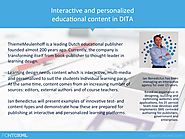
Jan Benedictus will present examples of innovative test- and content-types and show how these are prepared for publishing in interactive and personalized learning environments.

Learn how Lumia Phones Marketing and User Guidance joined forces to create one mobile application to help the consumer in troubleshooting and making most of their device. Hear about the process of rethinking the traditional divide between support and marketing content.
This is a talk about how we adopted the UTA approach to provide customer-centered information experience.
I will present one Information Development team's struggle to adjust to the accelerated environment that Agile Software Development requires of teams to become faster and more efficient without compromising quality. Key to our success are the basic concepts of collaboration inside and outside of our team, process simplification, and acceleration through focusing only on what is important. I will give real solutions on how the team discovered ways to collaborate and to streamline processes when we were forced to go faster.
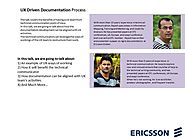
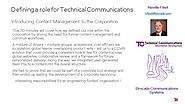
Introducing Content Management to the Corporation
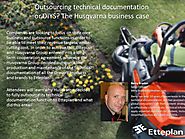

Join us to learn our challenges and successes in establishing a content creation collaboration between HP's Knowledge Management group and the Learning & Development groups. We had to break down silos, establish relationships, integrate development schedules, develop content sharing techniques, and more.
¿CÓMO ES TU DÍA ACTIVO?:
Este sería mi itinerario aproximado de lunes a viernes.
TIPO ACTIVIDAD GASTO ENERGÉTICO TIEMPO GASTO TOTAL
Dormir 0,017 480 816
Aseo 0,05 30 150
Desayuno 0,03 10 30
Caminar a 3,6 km/h 0,051 10 51
Trabajo ligero 0,031 360 1116
Caminar a 3,6 km/h 0,051 10 51
Comida 0,03 15 45
Tumbado despierto 0,023 90 207
Pasear 0,038 30 114
Estudiar 0,02 200 400
Caminar a 3,6 km/h 0,051 10 51
Cena 0,03 15 45
Tumbado despierto 0,023 180 414
TOTALES 1440 3490
Según el segundo cuadro, mi ingesta diaria tendría que ser de 2.850 kcal./día.
Según esto, mi consumo de energía diario está por encima de la ingesta diaria recomendada para una actividad física moderada. En consecuencia, mi actividad física es mayor de lo que yo creía. Mi peso está en torno a los 100 kilogramos; el problema está en que soy un “glotón” y como en exceso. La solución pasaría por hacer más ejercicio y/o reducir la ingesta de calorías.
